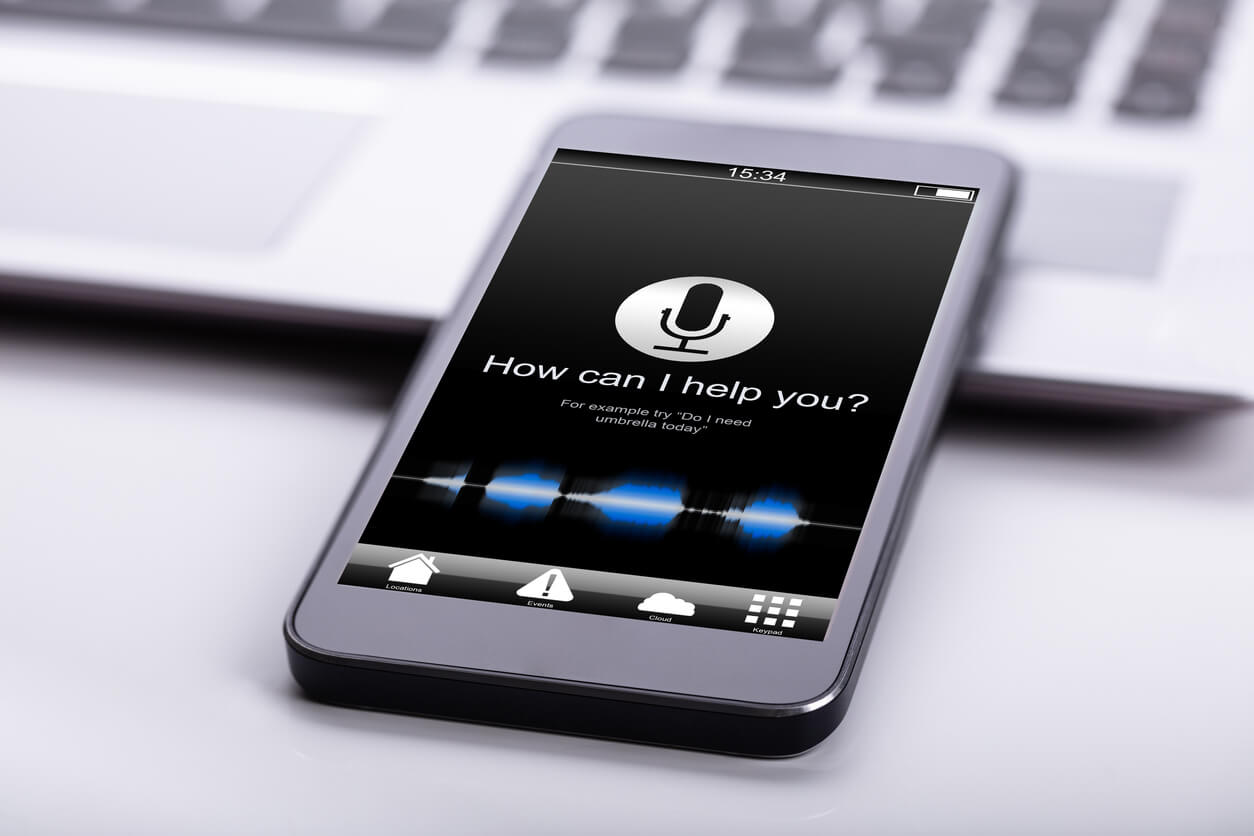“Affirmative, Dave – I Read You”: Enabling B2B Buyers Through Voice Experiences
- Today’s buyers are using voice search and voice-powered digital assistants to access information, complete tasks and consume audio content
- With the increasing adoption of voice interactions, demand marketers should start thinking beyond the screen for program activation
- Innovative demand marketers have the opportunity to leverage voice interactions to optimize delivery mechanisms, offer strategies, and the website experience
In the 1968 Stanley Kubrick film 2001: A Space Odyssey, the sentient supercomputer HAL 9000 famously declines a critical command in its eerily calm and conversational voice: “I’m sorry, Dave. I’m afraid I can’t do that.” The implications of AI refusing a command on the basis of self-preservation aside, one thing is clear – conversation between humans and machines is no longer the stuff of sci-fi. 
We’ve grown comfortable with talking to computers. And they’ve gotten better at delivering reasonably intelligent answers.
Consumers are using voice commands and digital assistants to find information, complete tasks and consume content in their everyday lives. This means that B2B buyers are already using voice interactions in some way.
Voice as both an interface and a delivery mechanism for content presents the opportunity for demand marketers to think beyond the screen for digital program activation.
The continued integration, adoption and utilization of voice across digital platforms and devices means B2B organizations will need to optimize web properties for voice search, operationalize voice interactions at task-oriented touchpoints in the buyer’s journey and customer lifecycle, and identify opportunities to deliver personalized, content-rich audio experiences that provide value.
Types of Voice Interactions
Demand marketers need to look toward planning for the following two types of voice interactions in the tactic mix:
- Voice-enabled. These interactions are facilitated by voice and refer to the day-to-day activities that users participate in, such as using voice commands to search for information, complete simple tasks, and control other apps and devices. Voice-enabled interactions usually provide a path to an on-screen interaction, such as accessing voice search results on a mobile screen.
- Voice-first. Tactics that are purpose-built for voice interaction include screenless content experiences delivered through voice apps or skills. These opportunities for simulated interactions should inspire marketers to rethink existing screen-based assets and experiences for voice activation and consider creating new voice-first experiences.
Voice Use Cases for Demand Marketing
Demand marketers should consider the following four key use cases for leveraging voice interactions to enable buyers:
- Voice search. Buyers often search questions when speaking, so voice queries tend to be longer and more conversational. Mine chat and support logs, social media, and forums and user groups for topic patterns and clusters to understand buyer lexicon, and include common buyer questions in page titles and metadata.
- Task completion. Voice interactions may be used to complete non-complex tasks such as listening to the latest headlines, voice shopping, triaging email, scheduling or confirming an appointment, or creating content or replies using voice-to-text. Start by mapping goals for task-related voice activities to existing touchpoints, such as motivating active demand toward a screen-based interaction for more in-depth engagement or enabling an existing customer to contact a provider directly via call or chat.
- Skills. These voice apps enable the completion of more complex tasks and present an opportunity to engage buyers with niche audio content, conversational paths, sequential activities, high-impact narrative experiences, and conversion opportunities leveraging voice commands (e.g. call, shop, order). Some popular voice app formats include trivia, games, curated content hubs, choose-your-adventure stories and/or questions or tips of the day.
- Content activation. Demand marketers should think about content assets and interaction paths that are a good fit to adapt for the voice experience according to audience, goals and program design requirements. Content assets and offers to evaluate for voice-first activation include thought leadership, assessment tools, learning modules, interactive content (e.g. e-books, guided tours), and conversational content (e.g. chat playbooks), while audio assets like podcasts are a natural fit for voice activation.
Demand marketers must begin planning now to design the voice interactions required to meet buyers where they are, through the devices and channels in which they’re engaged. Define the organization’s voice identity and personality, and then prioritize the types of voice experiences to support or create across digital platforms.
To learn more about voice and the other technology-driven trends that high-performing B2B organizations are leveraging to enable their buyers, please join us for the SiriusDecisions Roadshow series this September!
